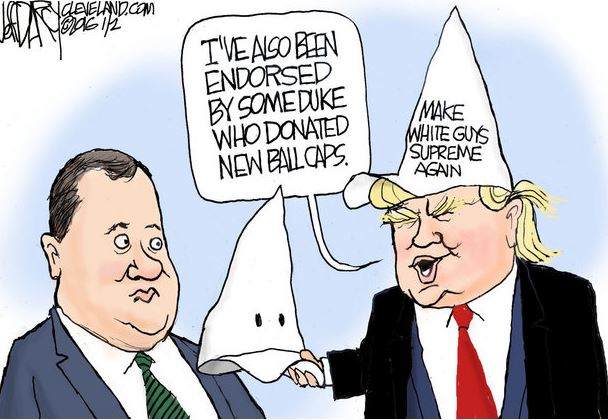Stump Speech is a recurring series that examines the language used on the campaign trail – how well it works, and who’s behind it.
Right now, #AltRightMeans is trending on Twitter.
Today, Democratic Presidential candidate Hillary Clinton gave a speech in Reno, Nevada, where she highlighted Republican Presidential candidate Donald Trump’s ties to the “alt-right” movement.
The alt-right movement got cozy with Republican Presidential candidate Donald Trump due to his animated calls for nationalism, views on immigration, opposition to multiculturalism, and ya know, that one time he didn’t completely shut down the endorsement of former Ku Klux Klan grand wizard David Duke. With Trump’s appointment of Stephen K. Bannon, the executive chairman of Breitbart News – the “news” outlet that once ran the headline: “Birth Control Makes Women Unattractive And Crazy” – as Trump’s campaign chief, the connection to the alt-right movement was made official, as Bannon describes his outlet as “the platform for the alt-right.”
But calling this movement alt-right is extremely dangerous. Language is important for framing political movements and moments, and has a power to shape the way we look at issues and parties. The term “alt-right” is euphemistic. It is, essentially, a rebranding of White Supremacy that allows the movement to exist in the general electorate. The term “alt-right” alludes to a connection to a legitimate political party, and allows the movement to masquerade as something that doesn’t have political, economic, and culturally devastating consequences.
Take one of the earliest alt-right essays by Richard Hoste, who argues that the problem with mainstream conservatism is that it fails to take a “natural racial hierarchy…with whites and Asians at the top and blacks at the bottom” as a main political pillar. Trump did, however, take at least one page from Hoste’s book, who in 2010 claimed “Reducing Islamic immigration in the name of fighting terror would receive widespread public support.”
The alt-right is not a conservative movement; it did not start with Donald Trump; it does not represent the Republican party. It is, however, a Trojan horse-esque vehicle for white supremacy to participate in a national dialogue under the shroud of the political right. Calling a white supremacist movement “alt-right” plays into a disconnect Americans have with understanding how the consequences of slavery and institutionalized racism are still present in 2016.
So #AltRightMeans, what, Twitter? White supremacy.

Photo credit: Jeff Darcy, Cleveland.com